Andrew Nicholas Oliver and Philip Edward Oliver, together known as the Oliver Twins, are British twin brothers and video game designers.

Paperboy is an arcade action game developed and published by Atari Games, and released in 1985. The player takes the role of a paperboy who delivers a fictional newspaper called The Daily Sun along a street on his bicycle. The arcade version of the game featured bike handlebars as the controller.

Mercenary is a 3D action-adventure game written for the Atari 8-bit family and published by Novagen Software in 1985. It was converted to the Commodore 64, ZX Spectrum, Amstrad CPC, Atari ST, Amiga and Commodore 16/116/Plus/4 platforms. The game uses vector graphics renderings of vast, sparse environments and has open-ended gameplay. It was also released as Mercenary: Escape from Targ and Mercenary: A Flight Simulator Adventure.
Thalamus Ltd was a British computer game developer that published titles for a number of 8-bit and 16-bit platforms during the late 1980s and early 1990s.

Stunt Car Racer is a racing video game developed by Geoff Crammond. It was published in 1989 by MicroProse, under their MicroStyle and MicroPlay labels in the United Kingdom and in the United States, respectively. The game pits two racers on an elevated track on which they race in a head-to-head competition, with ramps they must correctly drive off as the main obstacle.

Emlyn Hughes International Soccer (EHIS) is a soccer computer game first released in 1988 by Audiogenic Software Ltd. The game is named after the popular English footballer Emlyn Hughes. It initially appeared on the Commodore 64, with other versions produced for the Amstrad CPC, ZX Spectrum, Atari ST and Amiga.
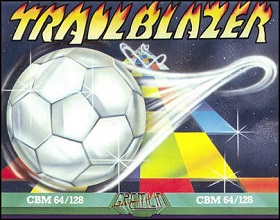
Trailblazer is a racing video game developed by Mr. Chip Software and published by Gremlin Graphics for the ZX Spectrum, Commodore 64, Atari 8-bit family, Amstrad CPC and Commodore 16/Plus/4 in 1986. It was ported to the Amiga and Atari ST.
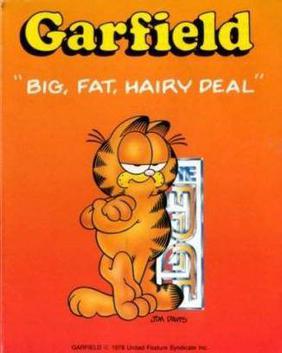
Garfield: Big Fat Hairy Deal is a 1987 computer game for the Atari ST, ZX Spectrum, Commodore 64, Amstrad CPC and the Amiga based on the comic strip Garfield. It is the second video game based on Jim Davis' Garfield comics to be released, following 1986's Create with Garfield.
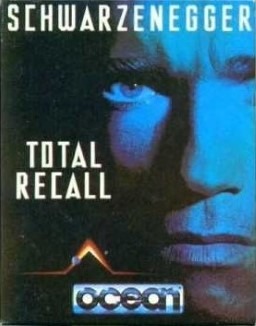
Total Recall is a 1990 platform game developed and published by Ocean Software that was released for the Commodore 64, Amiga, Amstrad CPC, ZX Spectrum, Atari ST, and Nintendo Entertainment System. Total Recall is based on the 1990 film of the same name.
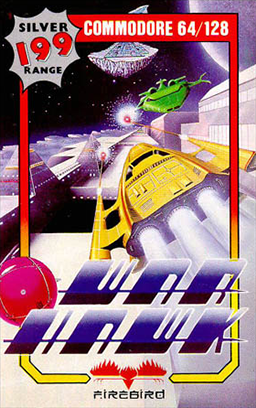
Warhawk is a vertically scrolling shooter published in 1986 by Firebird software. It was released for the Commodore 64, Atari 8-bit family, Amstrad CPC, and Atari ST.
Addictive Games was a UK video game publisher in the 1980s and early 1990s. It is best known for the Football Manager series of games created by company founder Kevin Toms. The company was originally based in Milton Keynes, England, and later relocated to Bournemouth, in southern England.
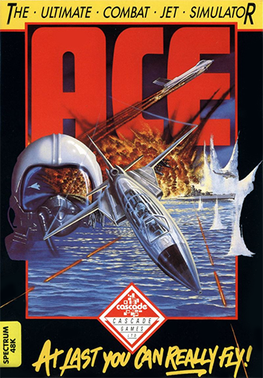
Ace is a combat flight simulator video game published for the Commodore 64, VIC-20, and Plus/4 in 1985 by Cascade Games. It was ported to the Amstrad CPC, Amstrad PCW, Amiga, and ZX Spectrum.

Ninja is a beat 'em up game developed by Sculptured Software and released by Mastertronic in 1986 for the Atari 8-bit family, Commodore 64, and ZX Spectrum, then in 1987 for the Amstrad CPC, Amiga, Atari ST, and MS-DOS. An arcade version of the game was released in 1987 for Mastertronic's Arcadia Systems which is based on Amiga hardware. The Amiga, Atari ST, and Arcade versions were released as Ninja Mission. As a Ninja, the player attacks a fortress made of individual fixed screens which can be explored non-linearly.

The Flintstones is a 1988 video game based on the 1960s television series The Flintstones. The game was developed by Teque Software Development and published by Grandslam Entertainments. The game was released in Europe in 1988, for Amiga, Amstrad CPC, Atari ST, Commodore 64, MSX, and ZX Spectrum. A version for the Sega Master System was released in 1991.

P-47: The Phantom Fighter is a 1988 horizontally scrolling shooter arcade video game originally developed by NMK and published by Jaleco. Set during World War II, players control a Republic P-47 Thunderbolt fighter aircraft to face against the Nazis, who are occupying multiple countries around the world. Its gameplay involves destroying waves of enemies, picking up power-ups and new weapons, and destroying bosses. It ran on the Mega System 1 hardware.

Mickey Mouse: The Computer Game, also known as just Mickey Mouse, is an action game developed and published by Gremlin Graphics in 1988 for the Amiga, Amstrad CPC, Atari ST, Commodore 64, and ZX Spectrum.
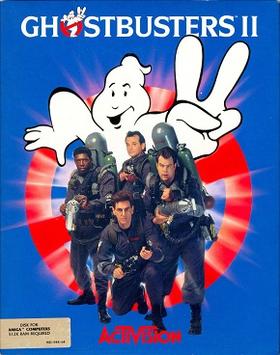
Ghostbusters II is a 1989 action game based on the film of the same name. It was published by Activision for various computer platforms. British studio Foursfield developed a version for Commodore 64, Amiga, Atari ST, Amstrad CPC and ZX Spectrum, which also got ported to the MSX by New Frontier. It features three levels based on scenes from the film. Dynamix developed a separate version for the DOS, also based on the film. The non-DOS versions were praised for the graphics and audio, but criticized for long loading times, disk swapping, and the final level. The DOS, Commodore 64 and Amiga versions were the only versions released in North America.
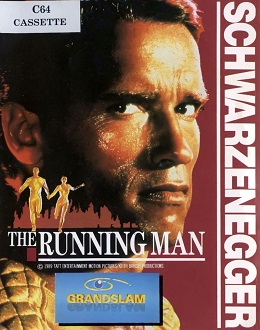
The Running Man is a 1989 beat 'em up video game based on the 1987 film of the same name. It was developed by Emerald Software and published by Grandslam Entertainments for Amiga, Amstrad CPC, Atari ST, Commodore 64, and ZX Spectrum.

Judge Dredd is a 1991 platform shoot 'em up video game based on the character of the same name. It was developed by Random Access and published by Virgin Mastertronic. It was released in Europe in 1991, for the Amiga, Atari ST, Commodore 64, and ZX Spectrum. Critics found the gameplay repetitive.
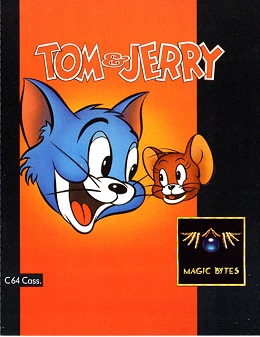
Tom & Jerry is a 1989 platform game developed and published by German company Magic Bytes. It is the first video game based on the cartoon of the same name, and was released in the United States and Europe, for Amiga, Atari ST, and Commodore 64 computers.

















